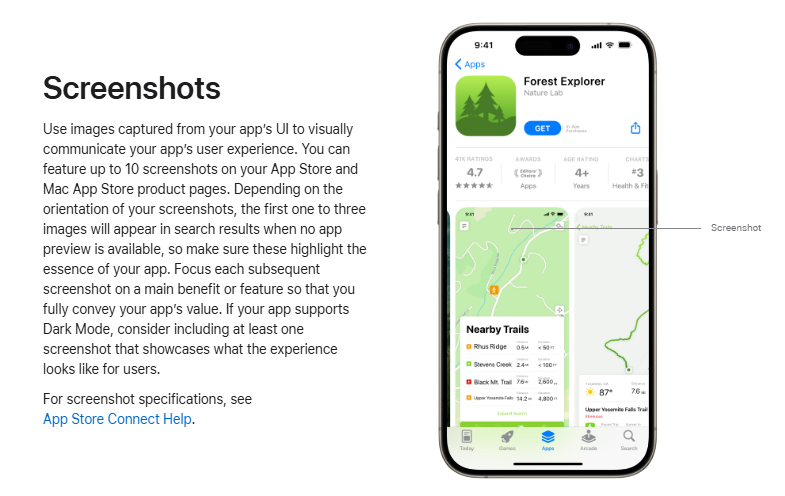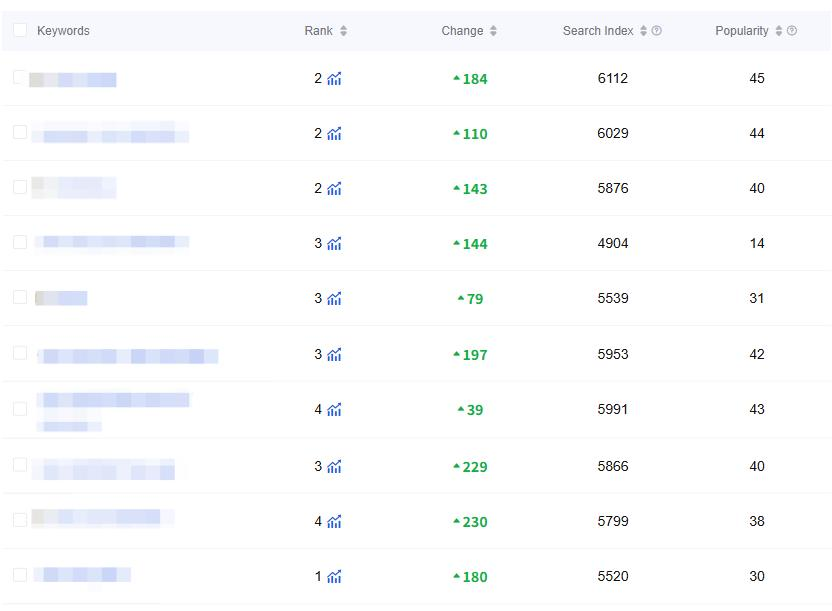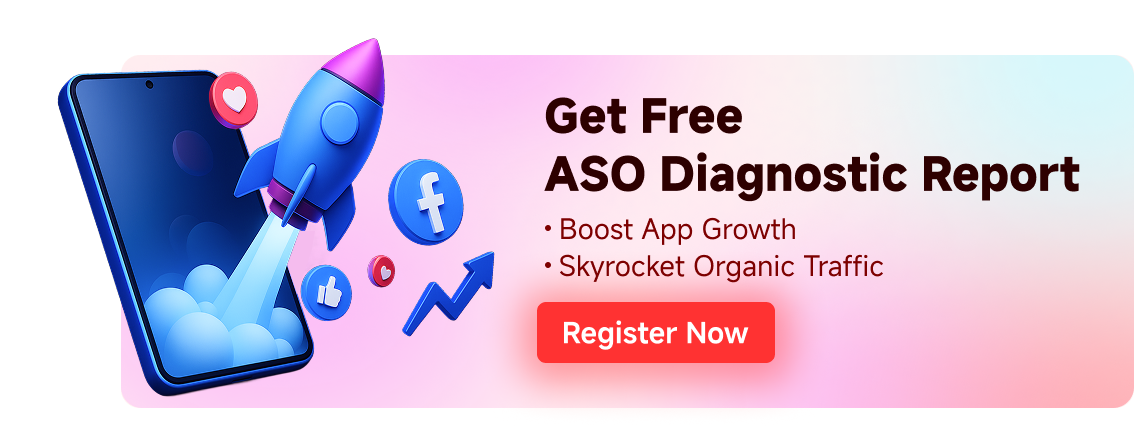
Loading...
Free consultation with ASO specialists
Doing ASO for the first time or have no idea how to carry out targeted optimization of your app?
We offer one-on-one customized services provided by app marketing specialists
How can utility apps break through in a red ocean market? Precise positioning and differentiated ASO strategies
2025-10-16
aso
ASO Techniques
Marketing strategy
App Store Optimization
Keyword Optimization
Application Growth

Introduction
In the red ocean market of mobile apps, utility apps face the dual challenge of user acquisition and retention. With countless apps vying for limited user attention, the key to breaking through lies in precisely targeting the right audience and implementing a differentiated App Store Optimization (ASO) strategy. As a core method for improving search rankings and download volumes, ASO is indispensable in this fiercely competitive environment. By systematically optimizing app metadata, keyword strategies, and store rankings, developers can effectively enhance their app's visibility and appeal. This article will start from user pain points and needs, combined with current ASO keyword trends, to propose differentiated optimization strategies that help utility apps achieve breakthroughs in this highly competitive red ocean.
User Pain Points and Needs: Opportunities in a Red Ocean Market
-
User Pain Point Analysis
-
App overload and choice paralysis: A large number of apps with similar features make it difficult for users to effectively distinguish between good and bad options, and products with vague positioning and generic functionality find it even harder to capture users' attention.
-
Severe homogenization and lack of memorable features: Similar functionalities and unclear value propositions result in low user stickiness and easy substitutability.
-
Poor performance and user experience: Issues such as crashes, lags, and a cluttered interface directly affect the user experience, turning what should be an efficiency-enhancing tool into a burden.
-
Insights into Core User Needs
What users really need are simple, efficient, and valuable solutions:
-
Tools should precisely address specific problems rather than increasing operational complexity. For example, in the field of productivity tools, users tend to choose products that genuinely save time and simplify processes, rather than applications with redundant features but unclear priorities.
-
The user experience needs to be simple and intuitive, with high professionalism. Especially in vertical fields, users expect reliable, secure, and trustworthy feature support.
-
By delving deep into the unmet needs of niche groups (such as missing features in specific industries or special usability requirements from certain user types), developers can create differentiated selling points and carve out blue-ocean markets in red-ocean environments.
ASO Optimization Strategy: Differentiation and Data-Driven Approach
Based on a clear understanding of user pain points, the following outlines specific and actionable ASO optimization strategies from three aspects: metadata optimization, keyword strategy, and ranking improvement, helping utility apps achieve differentiated breakthroughs.
Metadata optimization
Metadata is the foundation of ASO, directly influencing search rankings and users' first impressions. The optimization goal is to clearly convey core value and appropriately incorporate keywords.
-
Title and subtitle
It should be concise and impactful, incorporating core keywords and the app name. We recommend using the structure "App Name – Core Feature" (e.g., "Todoist – Efficient Task Management"), balancing recognizability with a clear description of functionality. The subtitle can highlight key features, such as "To-do lists, calendar reminders, project collaboration," while adhering to character limits (iOS ≤ 30 characters, Google Play ≤ 50 characters) to prevent truncation.
-
App description
The introduction should highlight the core selling points and address pain points to encourage users to keep reading. Secondary keywords should be naturally integrated in the middle and later sections, avoiding excessive stuffing. The language style should align with the target audience—professional tools should be precise, while everyday tools can be more casual. It is recommended to use clear paragraphs, symbols to emphasize key points, and enhance readability.
-
Icons and Screenshots
Visual elements determine conversion effectiveness. Icons should be simple and eye-catching, reflecting functional attributes (such as calendar, notes, etc.), and ensuring clarity and recognizability even at small sizes. Screenshots and preview videos should focus on core usage scenarios, accompanied by brief textual descriptions, showcasing the main interface, featured functions, and user outcomes in sequence, thereby enhancing installation intent through high-quality visual presentation.

Keyword strategy
Keyword strategy is the core component of ASO optimization, directly determining whether an app can accurately reach its target users. In a highly competitive market environment, systematic and differentiated keyword placement is especially crucial.
-
Keyword research
-
Organize primary and long-tail keywords around the app's features and target users. For example, productivity tools can include primary terms such as "event reminders" and "to-do lists," as well as long-tail keywords like "online study rooms" and "study time tracking."
-
Using keyword research tools, evaluate the search volume and competition intensity of each keyword, and prioritize keywords with high search potential and moderate competition as optimization focuses.
-
Keyword layout
-
Title: Embed core keywords to ensure search match and user recognition.
-
Subtitle/Short Description: Supplement secondary keywords and enhance feature descriptions.
-
Detailed description: Naturally incorporate relevant keywords to create semantically coherent and user-friendly content, avoiding keyword stuffing.
-
Platform differences: On iOS, you can use the keyword field to include relevant terms not present in the title, avoiding repetition or irrelevant keywords. On Google Play, keywords need to be integrated into the description, relying on content semantics for inclusion.
-
Differentiated keyword selection
-
Avoid direct competition for high-frequency generic terms, and instead shift to niche scenario keywords, such as using "note pads" and "study notes" instead of the general term "notes," to precisely attract vertical users.
-
Pay attention to emerging trend keywords, and if the app's features align, you can proactively position yourself to capture traffic benefits.
-
Continuous optimization and iteration
-
Regularly analyze keyword performance, identify high-conversion keywords and low-ranking keywords with high potential, and make targeted adjustments to metadata or ad placements.
-
Pay attention to sources such as search suggestions and user Reviews to uncover new keyword opportunities.
-
Validate the effectiveness of keyword combinations through A/B testing, enabling data-driven strategy iteration.
App store rankings and download numbers improved
The search rankings and display positions in app stores directly determine an app's exposure opportunities, while the number of downloads is not only a key metric for ASO effectiveness but also influences the ranking algorithm in return. To achieve sustainable improvements in rankings, it is necessary to adopt a systematic optimization strategy that combines multiple approaches.
-
Optimize Ratings and Reviews Management
The number of user Ratings and Reviews not only influences potential users' download decisions, but also serves as an important basis for app store algorithms to evaluate app quality. We recommend improving your Ratings performance through the following methods:
-
Promptly and kindly pop up a Ratings invitation after users complete key tasks or have positive experiences.
-
Actively respond to user feedback, especially promptly addressing and resolving issues, demonstrating the development team's sincerity.
-
Consider setting up a feedback incentive mechanism within the app community to encourage users to provide valuable usage experiences.
-
Use AppFastOptimization of Negative Ratings ManagementServices to help you improve the overall Ratings and trustworthiness of your app store
-
Promote organic downloads and social sharing
The steady growth in downloads can create a positive cycle, boosting rankings and attracting more organic traffic. Effective strategies include:
-
In the early stages of launch, we accumulated basic downloads and initial word-of-mouth through methods such as inviting seed users and offering limited-time experiences.
-
Design shareable content (such as achievement posters, templates, and usage tips) and encourage users to spread it through social platforms.
-
Leverage content seeding in communities or forums where the target users are active, highlighting the practical value of the app's actual usage.
-
Choose to collaborate with a reliable ASO vendor to enhance your product.Keyword rankingsCompared with the natural downloads of the product

-
Effectively Utilize App Store Ads
Under highly competitive keywords, paid advertising can quickly boost visibility and downloads, while also helping organic rankings grow:
-
Use Apple Search Ads or Google UAC ads to precisely target high-intent users and improve conversion efficiency.
-
Test the conversion performance of different keywords through advertising to provide data reference for natural keyword optimization.
-
Pay attention to controlling the cost of ad placement and ensure that the users brought by advertisements have good retention potential.
-
Strive for app store recommendation resources
Receiving official recommendations can greatly enhance brand credibility and download numbers:
-
Proactively submit app feature descriptions and update highlights to the App Store editorial team to increase the chances of being featured.
-
Optimize app icons, screenshots, and descriptions to make them clear, visually appealing, and aligned with the store's recommended aesthetic standards.
-
Pay attention to theme-based recommendation opportunities such as festivals and popular events, and prepare the corresponding versions or promotional materials in advance.
-
Establish a mechanism for continuous iterative optimization
ASO is not a one-time project, but rather a long-term process that requires continuous tracking, validation, and adjustment:
-
Regularly update the app version, fix issues, iterate features, and send signals of app activity to the algorithm.
-
Combine ASO tools to monitor core metrics such as keyword rankings, click-through rates, and conversion rates, and adjust metadata accordingly in a timely manner.
-
Conduct A/B testing to compare the impact of different screenshots, icons, or description versions on download conversions.
By comprehensively implementing the strategies mentioned above, utility apps can gradually build a visibility advantage in the red ocean market, achieving a synergistic growth in downloads and rankings. The key lies in adhering to data-driven decision-making, maintaining a steady pace of optimization, and continuously enhancing user experience at the product level, thereby forming a sustainable closed loop of organic growth.
Conclusion
Breaking through in the red ocean market is no easy feat for utility apps, but with precise positioning and a differentiated ASO strategy, it is entirely possible to overtake competitors by taking a shortcut. This article provides an in-depth analysis focusing on user pain points and needs, ASO keyword trends, and optimization strategies, offering developers actionable guidance. In summary:
-
Deeply understand users: Identifying the unmet pain points of target users and creating a unique value proposition are the foundations for breaking through. Simple, efficient, and professional applications are more likely to win user favor.
-
Grasp ASO keyword trends: Closely follow app store search trends, integrate core product keywords into optimization strategies, and select long-tail keywords based on specific segments to improve search match accuracy.
-
Optimize metadata and content: Carefully polish the title, description, icon, and screenshots to clearly convey the app's selling points and incorporate relevant keywords, thereby improving user click-through rates and conversion rates.
-
Data-driven iteration: Use ASO tools to monitor key metrics and continuously optimize keywords and store pages. Pay attention to user feedback and changes in app store algorithms, and adjust strategies accordingly.
-
Differentiated competition: By innovating features, refining positioning, or introducing innovative business models, the app can establish a differentiated advantage in a red ocean market, and this advantage can be amplified and communicated to users through ASO.
Finally, actions speak louder than words. To truly break through in the red ocean, we need to put these strategies into practice and continuously optimize them. If you want to quickly improve your app's keyword coverage and rankings, and gain more downloads, don't hesitate—act now!Sign up for our ASO optimization service, let our professional team create a customized optimization plan for you. We specialize in keyword coverage and ranking improvement, and have helped numerous tool-based apps significantly enhance their app store performance.
Click the button below now to register and receive a free ASO diagnostic plan! Let's work together to stand out in the competitive app market and win your users and success.
Related recommendations

